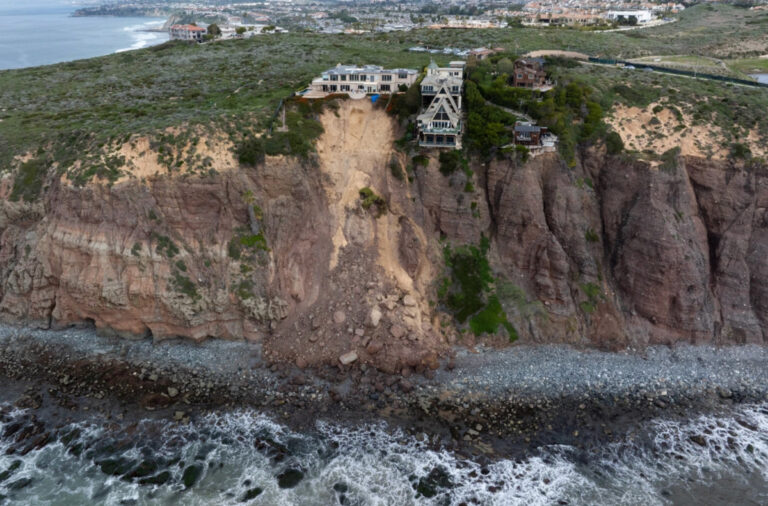Photo: Homes on the edge of a cliff in Dana Point, Calif., on Feb. 16. Qian Weizhong / VCG via Getty Images
Palm trees are falling, and multimillion-dollar homes are teetering. The state’s turbulent weather is only growing more extreme thanks to climate change.
A wave of intense rainstorms has accelerated landslides and contributed to damaging coastal erosion in California, leaving multimillion-dollar homes on cliffs’ edge, sending hundred-foot palm trees toppling into the surf and forcing the closure of a historic chapel.
The state is now drying out, but impacts from a second season of extreme rainfall could be felt for years to come. Climate change, which is intensifying rates of rainfall, spurring sea level rise and making droughts more severe, is contributing to some of the forces reshaping the California landscape.
This season’s storms have offered Californians a dramatic reveal and a preview of the consequences of a warming world, as slow-moving processes that scientists have warned about accelerate in plain view. Mike Phipps, a geologist with the geotechnical engineering firm Cotton, Shires and Associates, said landslide risk and sea level rise are combining to reshape the California coastline.
“The coastline is at a lot of risk,” he said. “As those cliffs are trying to retreat, the buildings are going to be threatened and there are situations up and down California where buildings have been razed and where buildings are falling into the ocean.”
Two years ago, 100% of the state was mired in drought and desperately in need of rainfall, according to the National Drought Monitor. Now, just tiny pockets of the state — 7% in all — are considered “abnormally dry” and residents are pleading for mercy from torrential rains.
The shift began last winter when more than a dozen atmospheric rivers pounded the state with precipitation, relieving the drought and saturating the state’s hillsides with moisture.
This year, the extremes have only continued.
This month, downtown Los Angeles has recorded more than 12.5 inches of rainfall — four times its typical monthly average and almost twice as much rain as what fell in all of 2022, according to National Weather Service data.
The rainfall has pushed some slopes to […]
Full article: www.nbcnews.com

